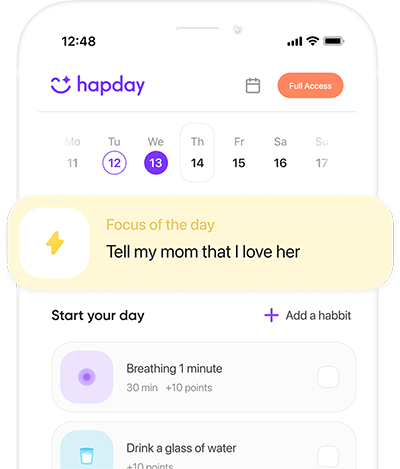Table of Contents
- Decoding ADHD-Induced Fatigue
- Peeking into the Science Behind Fatigue
- Diving into the Time-Frame Solution
- Step 1: Sorting Out Your Priorities
- Step 2: Work in Bits, Rest in Bits
- Step 3: Build Routine, Reap Rewards
- Digging into Underlying Health Factors
- What Nutrition and Exercise Bring to the Table
- Monitor, Adapt, Succeed
- Wrapping It Up
Decoding ADHD-Induced Fatigue
Did you know about 8.4% of kiddos and 2.5% of adults are dealing with ADHD? That’s practically a small army! Fatigue creeps in as a real sidekick to this condition. Why? Well, it’s partly caused by the non-stop effort to concentrate and those pesky sleep issues common in those with ADHD. And boy, can it make getting through the day feel like a Herculean task.
Peeking into the Science Behind Fatigue
There’s a piece in the Journal of Attention Disorders—fascinating read, by the way—that points out how ADHD messes with our zzz’s, leaving folks yawning all day. The brain’s chemical chaos, with neurotransmitters like dopamine and norepinephrine playing hide and seek, only adds to the mess. It’s like being caught in an endless loop of hyperactivity and exhaustion. Imagine that combo!
Diving into the Time-Frame Solution
Ever heard of the Pomodoro Technique? It’s more than a fancy word—it’s key to the time-frame solution. Here’s how it rolls: break your day into bite-sized chunks. Work hard for a bit, rest, then repeat. It’s like a fitness routine for your brain!
Step 1: Sorting Out Your Priorities
Kick things off by jotting down what’s on your agenda. It’s essential. There’s solid advice from the Journal of Experimental Psychology that talks about the magic of prioritization. By handling critical tasks first, you essentially save your mental fuel for what truly matters. Isn’t that neat?
Hints for Prioritizing
- Get Yourself a Planner: List tasks, rank them—urgent ones first.
- Dream Realistically: Break big duties into bite-sized achievable steps.
- Ride the Energy Waves: Tackle tough stuff when you’re feeling most awake.
Step 2: Work in Bits, Rest in Bits
This is where the Pomodoro magic happens. Go hard for 25 minutes, then take a quick breather. Rinse and repeat. It’s all about keeping the brain fresh. Studies, those ever-reliable guides, say regular breaks can seriously boost your brainpower when dealing with ADHD.
Making the Most of Breaks
- Stretch Those Legs: Movement kicks up dopamine, which can boost focus.
- Find Your Zen: A quick meditation can bring some calm back into the chaos.
- Keep Hydrated and Fed: Water and healthy snacks are your energy’s best friends.
Step 3: Build Routine, Reap Rewards
Routines, love ’em or hate ’em, are gold for managing ADHD. The American Journal of Psychiatry tells us they’re a real game-changer for smoothing out mood swings and leveling energy. A set bedtime? Essential.
Routine Crafting 101
- Consistency’s Key: Stick to the same sleep schedule if you can.
- Morning Boosters: Start your day with stretching or maybe a bit of journaling.
- Wind Down Right: Try some music or light reading as the day closes.
Digging into Underlying Health Factors
Never ignore those pesky underlying health issues. Things like sleep apnea or an iron deficiency, it turns out, can make fatigue worse for those grappling with ADHD. Tik-tock, listen to your body’s whispers.
Call In the Pros
Getting a doctor’s perspective on managing ADHD is worth its weight in gold. Cognitive Behavioral Therapy (CBT) pops up as a useful tool here, and while meds can help, they come with the “medical supervision required” sticker. Always consult before dive-bombing into medications.
What Nutrition and Exercise Bring to the Table
A balanced diet and a bit of exercise? Classic advice—and for a good reason. Nutritionists suggest loading up on omega-3s, lean proteins, the works. It’s like a recipe for brain happiness.
Snack Smarter, Move Better
- Omega-3s Are Your Friends: Fish, seeds, nuts—they’re brain food.
- Complex Carbs, Anyone?: Keep energy levels smooth with whole grains.
- Drink Plenty of Water: Staying hydrated can keep fatigue at bay.
Monitor, Adapt, Succeed
Check in on how things are going, maybe keep a journal of your highs and lows in energy and productivity. Adjust accordingly. Trust me, it’s worth the time.
Tools of the Trade
- Apps Galore: Trello or Todoist can do wonders in keeping track.
- Keep a Diary: Track your energy and mood to spot patterns.
Wrapping It Up
There you have it! The time-frame solution isn’t just another method; it’s a way to thrive in spite of ADHD-induced fatigue. When you prioritize, use Pomodoro, and structure your days right, you’re setting yourself up for a better ride. Don’t forget to consult with experts and tweak your approach—flexibility is key. Overcoming fatigue isn’t just about hard work; it’s about smart strategies. And for those looking for more support, there’s always Hapday to explore innovative ideas and tips.

